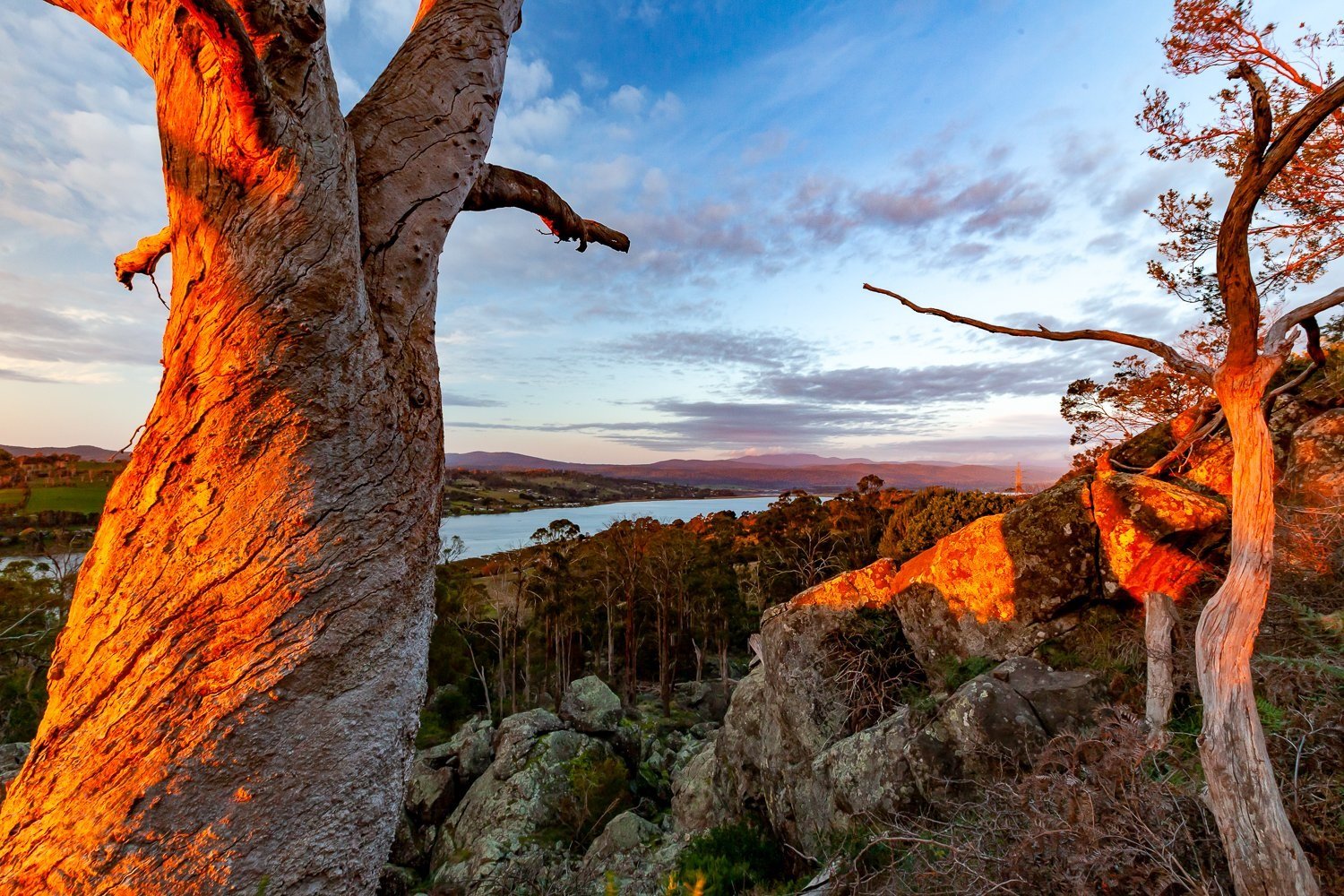
Aboriginal connection
The TEER Program acknowledges and pays respect to the First Tasmanians as traditional owners and custodians of the land we walk on. We also pay respect to the custodians and their Elders past, present and emerging, and recognise their care for land, sea and sky Country over the past thousands of generations.
The First Tasmanians belong to the oldest continuing culture in the world. They cared for and protected Country for thousands of years. Aboriginal connection with the Kanamaluka / Tamar estuary is an epic story of major cultural adaptations made in response to dramatic changes in climate and geography.
Although it was probably used as far back as 35,000 years ago, it is clear the Tamar basin has been used extensively from at least 7,000 years ago when sea levels rose, and it became the drowned river valley we see today.
At the time of the British occupation of Port Dalrymple in late 1804, the owners of the country on which Launceston now stands were the Leterrermairrener people. Their territory ranged from the current site of George Town along the eastern side of the Tamar estuary.
The Leterrermairrener were also a part of what archaeologists have called the North Midlands people, also known as the Stoney Creek Nation, who consisted of three, up to perhaps five, clans including the Panninher people from Norfolk Plains, and the Tyerrenotepanner based around Campbell Town.
Seasonal gatherings of the three known clans took place at significant places close to the site of Launceston. In addition to the North Midlands clans, the Pyemmairrenerpairrener people from the mouth of Pipers River made seasonal journeys to the Windermere area. Similarly, the Plindermairhemener people from the western reaches of Ben Lomond made seasonal visits to Port Dalrymple, which were reciprocated by the Leterrermairrener people. Large numbers of artefacts and cultural living sites found in connection with the waterways of the Tamar and on the floodplains and tidal flats of the Kanamaluka / Tamar estuary have been identified.
The Tamar floodplain and the swamp lands near Launceston were rich and reliable sources of food and game. The riverine marsh land was habitat for a wide variety of birds, mammals, reptiles, and frogs. Depending on the time of year, the Leterrermairrener and their neighbours had access to several species of duck, black swans, egrets, cormorants, and swamp harriers, and to their eggs. The drier hinterland hunting grounds provided ample emu, kangaroo and wallaby, the woodlands yielded possum, and the Kanamaluka / Tamar estuary an endless store of shellfish, especially mud oyster, mussel, and chiton.
There are many places along the Kanamaluka / Tamar estuary and Esk rivers including, Punchbowl gorge, Corra Lynn, and the Cataract Gorge that are culturally and spiritually important to Tasmania’s First peoples.



